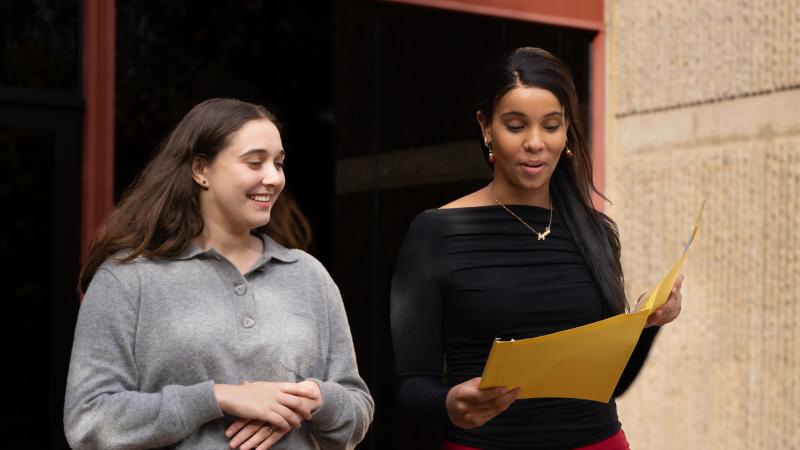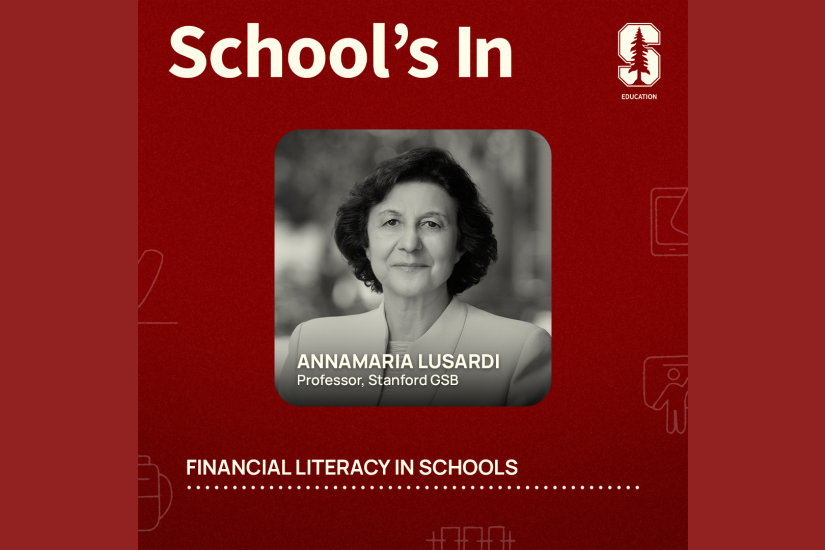
Learning from before and building toward more: Stanford GSE pilot course teaches the history of California education
If you were to teach a course on the history of education in California, where would you start?
Would you kick things off in 1921 when the state board of education was established? Or back in 1874, when attendance became compulsory for children ages 8 to 14 in California?
More importantly, how would you convey the significance of knowing the state’s educational history in the first place?
For Michael Hines, an assistant professor at Stanford Graduate School of Education (GSE), the place to start is long before California reached statehood – going back to Indigenous traditions in education then moving through European colonization and their impact on how children were taught. It’s important for California teachers to understand the history of education in the state, he said, because it affects their work in ways they may not even realize.
“Teaching is a deeply historical act, and whenever teachers come into a classroom they carry historical narratives with them,” said Hines, who piloted a course on the history of education in California last summer through the Stanford Teacher Education Program (STEP), a master’s program at the GSE that also leads to a preliminary California teaching credential.
“Whether these narratives are stories about the purpose of American education or stories about the histories of the communities where they’re working, the act of becoming a teacher or going into the classroom is freighted with this historical context that often goes unacknowledged.”
Doing the homework
The pilot course was funded by a STEP mini-grant, designed to encourage GSE faculty and doctoral students to pursue innovative projects that advance the field of teacher education. The mini-grant program supports STEP’s mission to serve as a “learning laboratory,” where faculty can explore and test new initiatives, and doctoral students can deepen their knowledge and skills.
Upon being approved for the STEP mini-grant in the fall of 2023, Hines and two GSE doctoral students, Ayan Ali and Abigail Kahn, set to work on figuring out what would be covered in the course and how they would deliver it to STEP students in the allotted week of instruction.
“This just felt like a really unique opportunity to create an exciting syllabus, and to think deeply about the needs of people who were going to be entering California classrooms in the very near future,” said Ali, who studies the history of education under the GSE’s Social Sciences, Humanities, and Interdisciplinary Policy Studies (SHIPS) program.
“We spent a lot of time doing background readings on histories of education in California, trying to get a lay of the land,” she said. “I spent a couple of months familiarizing myself with the literature.”
Hines, Ali, and Kahn worked together to gather a variety of historical materials, including primary and secondary sources, and to lead class discussions.
Kahn, whose dissertation proposal focuses on schools in internment camps for Japanese Americans during World War II, led a discussion for the course about this history in California, as well as Stanford’s involvement in creating curricula for the camps. “I gave each of the students copies of letters from December 1942 from ninth graders at the Minidoka concentration camp, introducing themselves to their teachers.”
The purpose of the exercise was to think about what the STEP students may be teaching at schools.
“School has a big hand in history, and in teaching students about race,” Kahn said.
Sharing with the class

Since the course isn’t a requirement for their degree, the STEP students all signed up on a volunteer basis to take the class for the week between their summer and fall teaching placements.
“The students who signed up were incredible throughout the entire process,” Hines said. “They came in with so much enthusiasm for the material, as well as questions, such a command of some of the issues we wanted to discuss, and with so much grace and empathy for each other and for us as an instructional team.”
“They really did help us co-construct the classroom space,” he said, “and that was one of the things that made it such a unique and positive experience for me.”
Emilio Luna, a STEP student raised in San Diego, said he enjoyed the course’s look into how different social and ethnic groups influenced education in the state.
“I learned more about the Chicano movement, including how it was often led by young people, and it helped me understand more about myself and where I stand in the history of California education,” Luna said. “I also learned more about what my role is as an educator, especially someone with my identity and how I position myself in the classroom to serve kids who have an identity similar to mine.”
For De’Jshon Maxwell-Garcia, a highlight of the class was learning about some of the local efforts people took to ensure equity in education for Black students, such as the work of Mothers for Equal Education, in East Palo Alto, who created Nairobi Day Schools to support learning opportunities for Black children.
“It surprised me how deeply rooted my efforts today are to things people have done in the past to ensure educational equity and freedom,” said Maxwell, a STEP student originally from Fresno, Calif.
“Thinking about the hurt, struggle, and pain that people have directly experienced in education makes things more real, and allows you to start thinking about things from the past and disrupt however it shows up today,” he said.
The instructional team also conducted interviews with the STEP students to gauge what they learned and felt they could apply to their teaching.
Hines and the STEP leadership team are now considering next steps for the course. An updated version, based on student feedback, is likely to happen this summer, said GSE Professor Ira Lit, faculty director of STEP.
“This course rests on an important idea that practicing teachers need to know and understand important aspects of the history of education to best serve and lead in the present,” he said. “I’m excited to see what we learn from this project and how it will help us move our work forward.”
Faculty mentioned in this article: Michael Hines , Ira Lit



